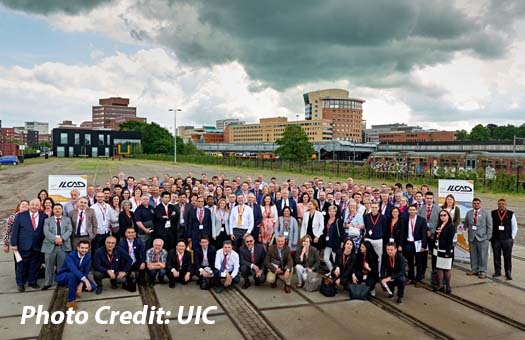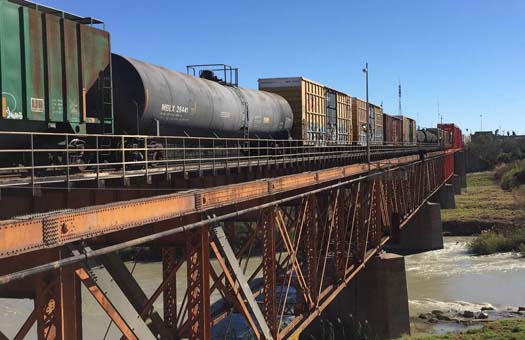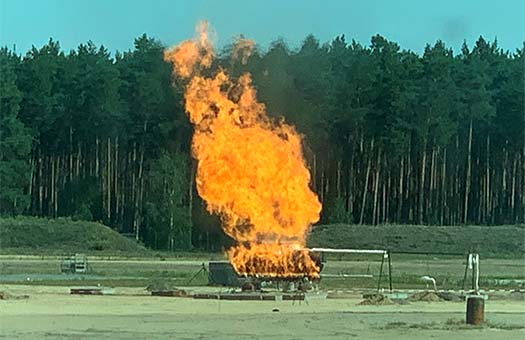International Programs
FRA’s International Programs Division develops positive relationships with foreign passenger and freight rail entities—within government, industry, and academia—facilitating communication and technical exchanges. The graphic below illustrates differing strengths and the importance of global collaboration to increase rail safety, efficiency, and productivity.
Data source: Jane's World Railways, “2019 Executive Overview.”
International Partnerships
FRA is an active member of the international rail advocacy body, the International Union of Railways (UIC), and participates regularly in its annual events and meetings. UIC facilitates technical cooperation among railroad entities across the globe while providing venues for exchanging information on best practices and subject matter expertise on a variety of rail topics.
In addition, the Federal Railroad Administration’s rail test facility in Pueblo, CO, the Transportation Technology Center (TTC), works with international vendors who benefit from specialized laboratories and 48 miles of track for testing freight and passenger rolling stock, vehicle and track components, and safety devices. Since 1996, TTC has hosted an annual research conference to share insights from research activities conducted there. International stakeholders attending the conference have similar research objectives and provide feedback at this forum.
Learn more about FRA’s work with international partners in the features below.
ILCAD 2019 — Amersfoort, Netherlands

FRA staff joined 180 grade crossing experts from 40 different countries for the 11th International Level Crossing Awareness Day (ILCAD) on June 6, 2019. ILCAD attracts railway industry representatives, road authorities, academics, and other infrastructure experts from around the world to spotlight the dangers associated with level crossings, or grade crossings.
ILCAD 2019 focused on technical as well as human processes: How can we adapt road and rail infrastructure to meet user needs? What low-cost measures could prevent dangerous behavior at grade crossings? In addition to level crossing safety solutions, attendees discussed awareness, engineering and innovation, human factors, risk management, enforcement, and investigation. FRA presented the latest U.S. grade crossing research and ways to engage industry, municipalities, and the public. ILCAD attendees also went on site visits to see how the Netherlands approaches level crossings.
Border Crossing Study
Congress charged USDOT and FRA with conducting an

international border rail study (House of Representatives Appropriations Committee Report No. 114-129) on passenger and freight rail service between the United States and Mexico, in Texas, and other international land crossings. The study found that standards and protocols for freight rail service vary between countries. U.S. and Canadian railroad and safety regulations are similar, whereas Mexico’s rail regulations are still in development. FRA is collaborating with Mexico’s newly created Rail Transport Regulatory Agency to facilitate cooperation on rail safety matters and regulatory practices in Mexico. Passenger rail service does not yet exist between the United States and Mexico.
For more information, read the technical report, International Border Passenger and Freight Rail Study, in FRA’s eLibrary.
Containment Fire Testing
FRA recently completed follow-on containment fire testing on rail tank  cars near Horstwalde, Germany. The testing, conducted at Bundesanstalt für Materialforschung und -prüfung (BAM), or Federal Institute of Material Research and Testing, involved one-third scale, ethanol-filled tank cars with pressure relief valves. Data on the safety performance of the tanks’ pressure relief valves under fire conditions will be published in 2020.
cars near Horstwalde, Germany. The testing, conducted at Bundesanstalt für Materialforschung und -prüfung (BAM), or Federal Institute of Material Research and Testing, involved one-third scale, ethanol-filled tank cars with pressure relief valves. Data on the safety performance of the tanks’ pressure relief valves under fire conditions will be published in 2020.
In 2015, FRA published a study involving total containment tanks (no pressure relief valves). In that study, tanks were filled with either water or a 50 percent sodium hydroxide (NaOH) solution. Extrapolating data, researchers estimated that the failure time for a full-scale tank car filled with the NaOH solution would be 62 to 88 minutes—falling short of the 100-minute requirement for these tank cars.
For more information on the 2015 testing, read the technical report, Rail Tank Car Total Containment Fire Testing, in FRA’s eLibrary.